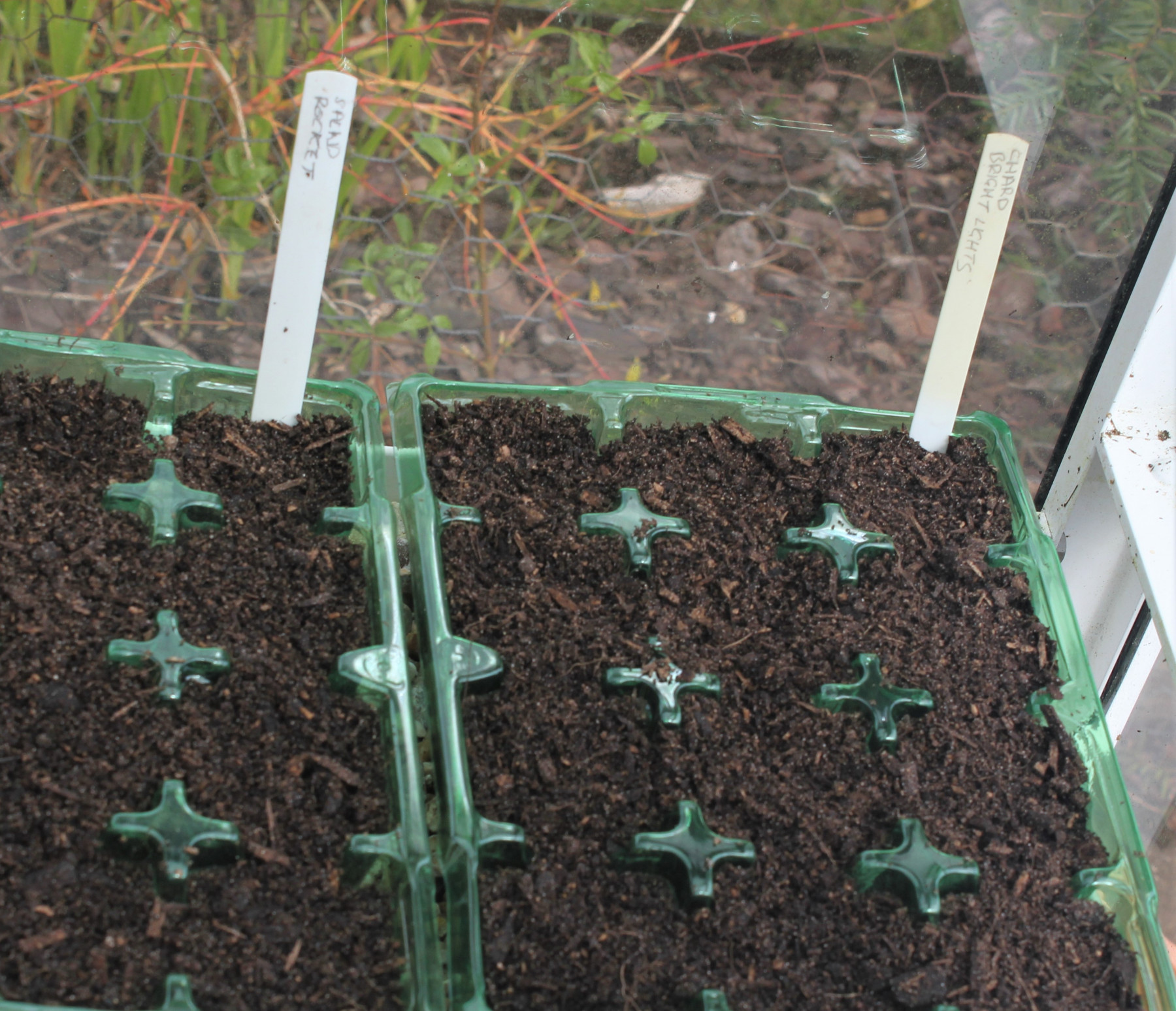
From now on the weather should begin to warm as spring progresses (note the use of the word ‘should’…. you never know these days!).
Sow broad beans, spinach, cabbage, calabrese, kohlrabi, cauliflower, lettuce, peas for pods and shoots onions, salad onions, turnip, radish, beetroot, leeks, leaf beet and chard in the greenhouse.
From the middle of the month onwards, sow dill, basil, coriander indoor cucumber, courgette, squash, sweetcorn and tomatoes for later transplanting outdoors. Protect peas, broad beans and sweetcorn from mice with fleece, netting or by dipping seeds in concentrated liquid seaweed.
Sow celeriac, spinach and turnip in modules early in the month.
Use peat free for all of your seeds. Use seed compost, or finely sieved multipurpose compost. Larger seeds like peas, beans and sweetcorn can be sown in straight multipurpose compost having picked out larger lumps. Instead of using pots, you can also recycle drinking cups, with a hole punched in the base, for larger seeds.
It is also time to sow half hardy annuals like Cleome hasselriana ‘Violet Queen’ (this and parsley, needs fluctuating temperatures to germinate). Alongside everything grown in the greenhouse, they will need ‘hardening off’ ready for transplanting once the danger of frost has passed and the soil has warmed.
Ventilate the greenhouse on warm days but avoid chilling draughts. If you have space, keep citrus and figs in the greenhouse all year round, especially in cooler climates as cold weather reduces flowering in citrus. Alternatively, ‘harden off’ move them outdoors into a sheltered, sunny spot. Citrus are hungry so need regular feeding. Use summer feed from late March to October dissolved in tepid rainwater. Figs in greenhouses usually produce two crops each growing season and fruit without pollination.
Repot tender plants into new compost before they start into growth. Organic composts tend to break down after a couple of years in warm conditions.
When shoots appear on tuberous begonias, thin them, leaving only the strongest. Repot and water hippeastrums, increasing the volume as growth quickens.
It is also time to sow half hardy annual climbers, to flower from midsummer to the first frosts. If you are sowing ‘Morning Glory’ (Ipomoea cultivars), soak the seeds in tepid water for 24 hours before sowing at 20C in small pots or modules, to avoid root disturbance when transplanting, then grow on in cooler conditions and ‘harden off’ when temperatures have increased. They are very cold sensitive, if chilled, they show their disapproval with pale yellow or white leaves, growth is checked, and sometimes they don’t even recover. I will be sowing Clitoria ternata a fast-growing tropical climber, with exotically shaped flowers of vivid deep blue. It needs plenty of warmth and sunshine and is at its best during long, hot summers. Last time I tried it the summer was dreadful and it only produced one flower. ‘Fingers crossed’ for this year. I’ll also be sowing Lablab purpureus ‘Ruby Moon’ with purple blooms and pods and purple-tinted foliage, it’s a really funky plant. Happy Gardening and stay safe, Matt.


